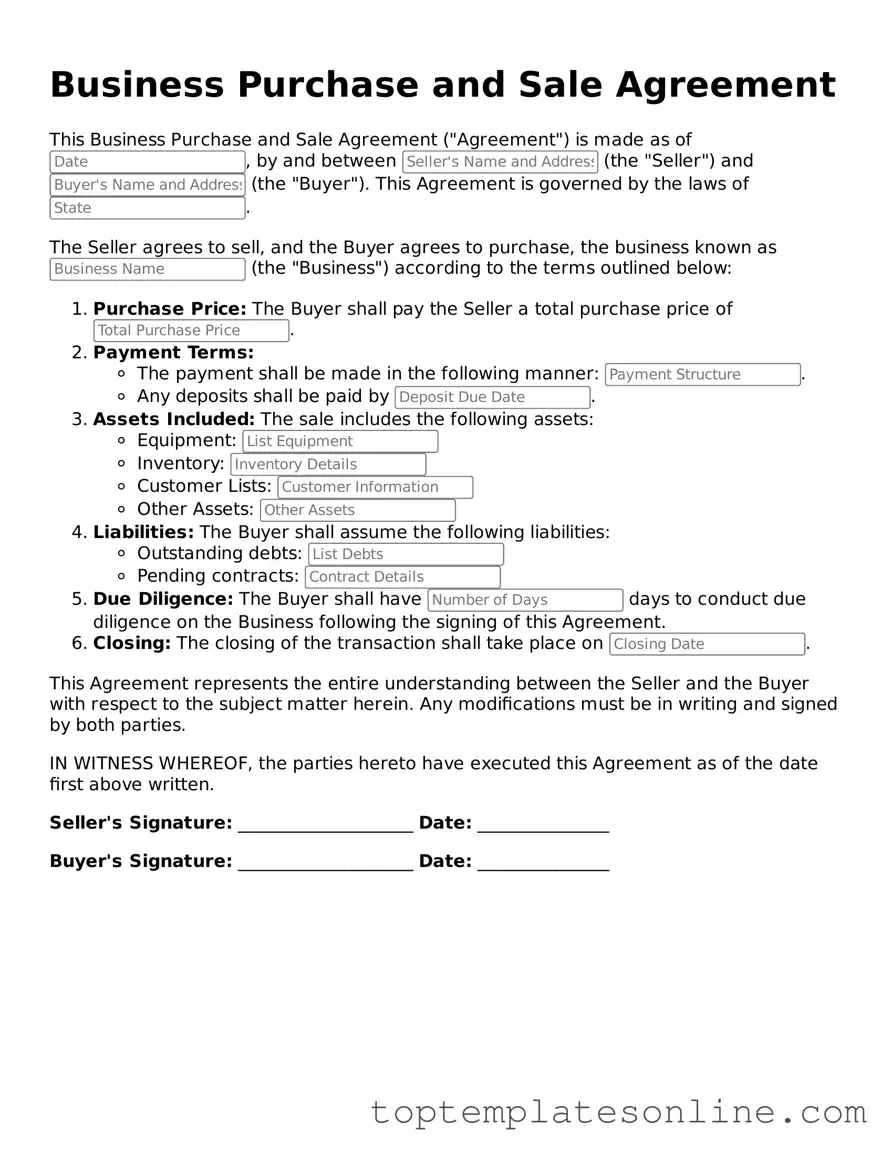Attorney-Approved Business Purchase and Sale Agreement Form
A Business Purchase and Sale Agreement is a legal document that outlines the terms and conditions under which a business is sold and purchased. This agreement serves to protect both the buyer and the seller by clearly defining their rights and responsibilities throughout the transaction. Understanding this form is essential for anyone looking to navigate the complexities of buying or selling a business.
Customize Business Purchase and Sale Agreement Here
